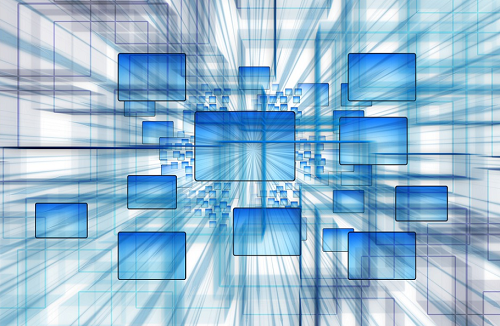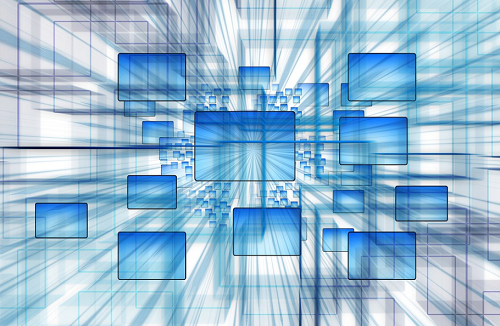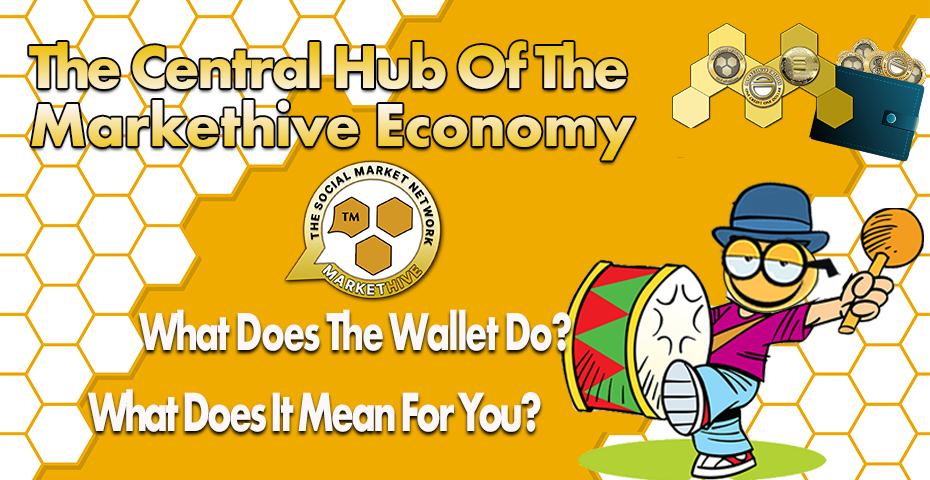


Image Source: Pixabay
Smart Contracts Enables Commodity Trading Transformation, GSCG Report Shows
Given that commodity trading is highly fragmented, blockchain-driven smart contracts can transform this sector by redefining market transactions and transparency, according to a Global Smart Commodity Group (GSCG) report.
Through the latest report dubbed “Commodity Wisdom: How Smart Contracts Are Changing Supply Chain Management,” GSCG highlights that smart contracts will be the gold standard for commodities platforms because they will render data integrity, traceability, and transparency.
Jack Bouroudjian, GSCG’s chairman, pointed out:
“The modern world is a data-driven place that has created our current digital age. Future markets will have greater efficiency in this ecosystem by using smart contracts. Capital efficiencies and data capture—along with maintaining the provenance of data—will be in the foreground for companies viewing this new landscape.” Read More
A Brief History Of Cross-Chain: Explaining Nine Different Cross-Chain Solutions
Cross-chain solutions have been the most talked about topic for the past year. With the rise of public chain infrastructures, there has been massive interest in how different chains talk and communicate. Solutions have been proposed and implemented, but none of them solves the fundamental problems without drastic trade-offs. Now we examine the different cross-chain approaches and divulge why and how they will shape the future of cross-chain infrastructure.
First, let's discuss what cross-chain technology is and why it is needed. Reason for usage: chains are heterogeneous and require developers significant time to keep track of the differences and challenges when moving assets across. Bridges are less secure and cannot be 100% trusted because they are usually owned by the blockchain project teams and highly centralized (messy with no coordination from each team). The goal of layer-1 blockchain is to standardize, but the segmentation of layer-1 chains is leading to the need of a cross-chain infrastructure layer that's even underneath the layer-1s.
The history of cross-chain mechanisms must be laid out and compared to understand the cross-chain solutions and compare their differences and attributes. Read More
Ethereum Merge Moves One Step Closer Following Sepolia Trial Run
Just one more testnet merge to go, say developers.
Ethereum testnet Sepolia today moved over to proof of stake.
Just one more testnet remains before the entire network completes the Merge.
The Merge, a long-awaited update to the network, is expected to happen this year.
Ethereum is one step closer to "The Merge"—its long-awaited move to a proof-of-stake blockchain. Today, another one of its testnets, Sepolia, executed its own merge and made the switch to proof of stake.
A testnet, short for test network, allows those using a blockchain to try out the new tech before it launches on its main network (mainnet) or undergoes an upgrade. This is particularly important with public networks such as Ethereum so that developers can ensure upgrades work smoothly—and billions in funds aren't lost.
Ethereum, the blockchain network that powers the second largest cryptocurrency by market cap, is undergoing a move to a proof-of-stake consensus mechanism. This takes time as the network is migrating to a completely new way of doing things.
Ethereum, Solana NFT Marketplace 'Wars' Heat Up as Firms Acquire Startups
OpenSea is making moves, but so are some key and emerging rivals. DappRadar sees a battle for NFT marketplace superiority on the horizon.
Recent NFT startup acquisitions and other moves suggest a potential "war" ahead between NFT marketplaces, writes DappRadar.
OpenSea currently leads all NFT marketplaces, but new rivals are emerging and gaining traction in the space.
Even amid a weakened NFT market over the last couple of months, top marketplace OpenSea has retained the dominant position in the space. But that first-mover advantage could come under threat from rivals that are both expanding in number and consolidating.
That’s according to a new industry report from blockchain analytics firm DappRadar, which pointed to the number of NFT marketplaces and aggregators acquired in recent months, potentially setting up what it describes as “looming NFT marketplace wars.”
OpenSea itself made the first big acquisition in recent months, acquiring NFT marketplace aggregator Gem in April. Gem allows users to purchase NFTs in batch buys across multiple platforms, and OpenSea CEO and co-founder Devin Finzer described the move as part of “a need to better serve more experienced, ‘pro’ users.”
Gem will remain an independent platform, however, some of its features will also be integrated within OpenSea’s own platform. And OpenSea also recently launched its own Seaport marketplace protocol, which adds advanced features and cuts down on Ethereum gas fees (the costs associated with making transactions on the network). Read More


What Does The Wallet Do? What Does It Mean For You?
The launch of the Markethive wallet is approaching, so it’s time to start beating the proverbial drum. It is the start of an exciting time with the advent of many integrations to follow the release of the wallet that will bring Markethive into prominence as an unprecedented platform. The combination of inbound marketing, social media, digital broadcasting, video, conference rooms, e-commerce, gamification, etc.
Markethive is a blockchain-driven crypto economy, all-inclusive, with a distributed database system required for this decentralized, monolithic global project. We’re almost there with the release of the wallet that will initiate entrepreneurial sovereignty and open the floodgates of this divine enterprise with its plethora of systems and services, including the new interface and dashboard.
We now have a complete working wallet with the Solana Network, and we also have a fully functional crypto merchant account. The Markethive wallet is being polished with the finishing touches, keeping mindful that it’s not just a simple wallet but a comprehensive, dynamic engine centralized for you that powers your platform and business.
Markethive is fundamentally a sophisticated inbound marketing and storefront platform, integrated with a social network, and not just another social media platform you see popping up to counter the media tech giants we’ve come to know as oppressive, censoring you and using your personal data for their own gain. Read More
Polygon to Enable Web3 Functionality in Smartphones With Nothing Collaboration
After Solana, Polygon is gearing up to bring Web3 to a broader audience.
Polygon has announced a partnership with Nothing, the creator of Phone (1). The Ethereum scaling protocol’s tech will be integrated into Nothing’s first smartphone. While Polygon won’t be manufacturing its own smartphone, the partnership aims to bring crypto and NFTs to a larger audience by enabling access to Web3 functionality to such users.
Polygon-Nothing:
The phone manufacturer will be airdropping non-fungible tokens (NFTs) to its community investors. Dubbed “Nothing Community Dots,” the membership program will enable members to access exclusive community content. Some special perks include discounts on merchandise, entry into unique offline events, etc.
This is the first step of the collaborative effort, which comes ahead of the virtual launch of Nothing phone (1) slated for July 12th.
“This launch is designed to take the Nothing brand beyond consumer tech, making it one of the first in the sector to bridge real-world products with the fast-growing Web3 space. In the future, the goal is to make all of Nothing’s phone products and other ecosystem devices future-ready by supporting sustainable and secure access to Web3 applications.”
In addition to apps and games on the Polygon platform, Nothing Phone (1) users will be able to access the network’s payments and future features, such as a proof-based identification solution, Polygon ID, etc. Polygon revealed that the end goal is to make all of Nothing’s phone products and other ecosystem devices “future-ready” by backing sustainable and secure access to Web 3 apps. Read More
Health2Earn is Already Here: HealthBlocks dApp Rewards You with Tokens
With a massive amount of “X-to-earn” projects appearing in the blockchain space every day, there are many unique possibilities to earn with crypto. Since the inception of earning through PoW (Proof of Work) mining, countless ideas have entered the market. Specifically, over the past year, we have witnessed so many new ways of earning tokens based on proving various activities.
The most promising and exciting use cases are: Play-to-Earn and Move-to-Earn.
Combined with NFT capabilities, Play-to-Earn makes the entire gaming experience more thrilling and rewarding for players. In the same way that sports betting makes watching a football match much more enticing, P2E is starting to have the same effect in the blockchain space.
The Move-to-Earn category is newer but just as promising. There has been generous hype around projects like STEPN lately, and people are embracing the idea of jogging with their NFT sneakers and getting rewarded for that activity. Doing fitness + earning tokens = pretty cool, right?
Another project called HealthBlocks is tackling how to actively engage individuals and encourage them to live healthier lifestyles in a broader scope. They’re shifting from Move-to-Earn to Live-to-Earn.
HealthBlocks gives tokens for completing health goals and choosing to contribute the generated data from connected fitness wearables and smartphones. Built on the IoTeX blockchain, the health data is stored and utilized in a secure, private, and verifiable way. Read More
Reddit announces new blockchain-backed ‘Collectible Avatars’
The company said that the project is set to utilize the Polygon blockchain for decentralized trading and third-party sales.
Content aggregation, ranking, and discussion website Reddit announced a new blockchain-backed avatar system on Thursday. Though no official date was revealed, the company suggested that the avatars will be available to the general public in the next few weeks. For now, Reddit is providing first-look early access to a limited number of people who join the r/CollectibleAvatars community.
Collectible Avatars are a set of limited-edition artwork created by independent artists who are also users of the Reddit website. The new avatars can be purchased with local currencies. However, the announcement stated the artwork is stored on the Polygon blockchain. In addition, management of the Collectible Avatars is handled through Vault, Reddit’s blockchain-powered wallet that functions on Ethereum-compatible chains.
This latest move by Reddit aims to empower artists that use the website, as stated in Thursday’s announcement on their website:
“From the start, our goal has been to empower artists to create and sell their work. Artists will get paid for every Collectible Avatar that sells on Reddit, less any fees, and are also entitled to receive royalties from secondary sales of their Collectible Avatars on open marketplaces.” Read More
How will NFTs bridge traditional gaming with blockchain? Enjin's CTO Witek Radomski explains
"There's also a hugely untapped mountain of gold in gameplay possibilities with NFTs," says Radomski.
When it comes to nonfungible tokens or NFTs, the subject is often a hit or miss for traditional gamers. While some players welcome the idea of being able to trade in-game digital collectibles for real money, others lament that NFTs could potentially take away the inherent entertainment built within games. So can NFTs contribute any additional value to traditional games, other than turning them into play-to-earn "moneymakers?"
To answer this, Cointelegraph Markets Pro spoke to Enjin's chief technology officer and co-founder Witek Radomski via an ask-me-anything session. Enjin offers a comprehensive suite of products for creating, tokenizing, trading, distributing, and integrating NFTs into the virtual world of GameFi. Notable projects using the service include Lost Relic. In addition, Microsoft Azure is working with Enjin to gamify their developer experience with Azure Heroes NFTs. When asked about the future of GameFi, Radomski explained that it's difficult to build a good-looking game that's also fun to play, and it's even harder to grow a community around a game that sticks:
"We'll experience a renaissance of blockchain gaming once things settle down with the bear market and more established developers focus on fun games, NFT utility and thinking beyond simply earning crypto coins through playing a game." Read More
Disclaimer: These articles are provided for informational purposes only. They are not offered or intended to be used as legal, tax, investment, financial, or any other advice.